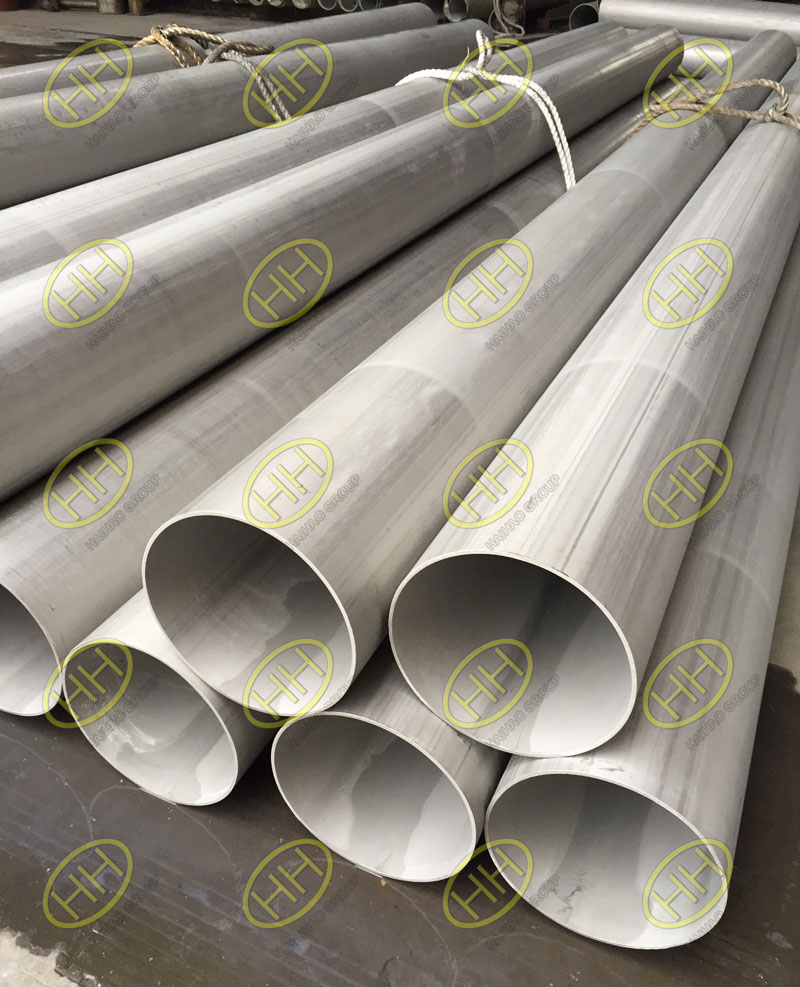Haihao Group’s high-quality welded steel pipes
Haihao Group is proud to offer a wide range of welded steel pipes, also known as welded pipes. These pipes are manufactured by rolling steel plates or strips into shape and then welding the seams together. Welded steel pipes are known for their simple production process, high efficiency, and variety of specifications. While generally not as strong as seamless steel pipes, they provide an economical solution with lower equipment investment.

ASTM A312 TP304 welded steel pipes
Types of welded steel pipes
Welded steel pipes can be categorized by the type of welding seam into straight seam welded pipes and spiral welded pipes. Based on production methods, they are classified into:
Arc Welded Pipes
Resistance Welded Pipes (High-Frequency, Low-Frequency)
Gas Welded Pipes
Furnace Welded Pipes
Straight Seam Welded Pipes can be further divided into high-frequency straight seam welded pipes and submerged arc welded straight seam pipes. These pipes feature a simple production process, high efficiency, low cost, and rapid development. On the other hand, Spiral Welded Pipes boast higher strength compared to straight seam pipes and can produce larger diameter pipes from narrower materials. However, they have a longer welding seam, which increases by 30-100% compared to pipes of the same length with a straight seam, and they are produced at a slower speed. Hence, smaller diameter pipes typically use straight seam welding, while larger diameter pipes use spiral welding.

SSAW welded steel pipe
Manufacturing Processes
Manufacturing Process for Submerged Arc Welded (LSAW) Pipes
LSAW pipes are typically made from steel plates and are formed through various processes using double-sided submerged arc welding and post-weld expansion. The main equipment includes edge milling machines, pre-bending machines, forming machines, pre-welding machines, and expander machines. The forming methods for LSAW pipes include UO (UOE), RB (RBE), and JCO (JCOE).
Manufacturing Process for High-Frequency Welded (ERW) Pipes
ERW pipes are produced by forming hot-rolled coil into shape and using high-frequency currents to heat and melt the pipe edges. The pressure welding is then performed under the action of squeeze rollers.
Manufacturing Process for Spiral Welded Pipes
The raw materials for spiral pipes include strip steel, welding wire, and flux. The strip steel undergoes leveling, edge trimming, surface cleaning, and edge treatment before forming. A welding seam gap control device ensures that the gap meets welding requirements, and pipe diameter, misalignment, and gap are strictly controlled. The first three pipes of each batch are subjected to stringent inspections to check mechanical properties, chemical composition, fusion status, surface quality, and non-destructive testing before formal production begins.
Inspection Items
Welded steel pipes undergo rigorous inspection, including:
Dimensional Checks
Weight Measurement
Chemical Composition Analysis
Mechanical Properties Testing
Impact Toughness Testing
Physical and Chemical Examination
Hydrostatic Testing
Eddy Current Testing
Ultrasonic Testing
Magnetic Leakage Testing
Visual Inspection
At Haihao Group, we ensure that every pipe meets stringent quality standards, providing our customers with reliable and durable products suitable for various applications. Our commitment to quality and efficiency makes us a trusted name in the welded steel pipe industry.
For more information about our products and services, please visit our website or contact our sales team. We look forward to meeting your needs with excellence and precision.

